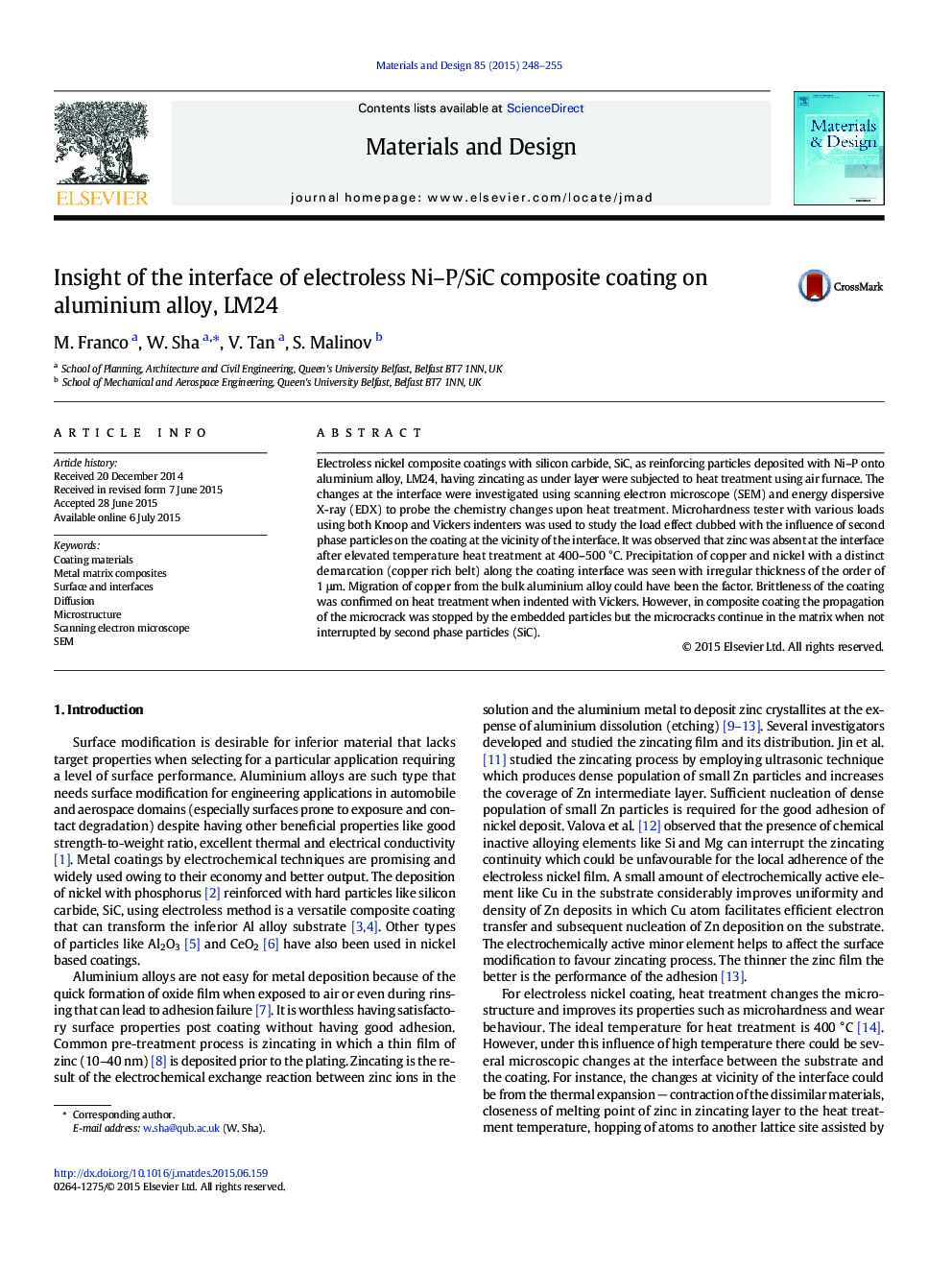| Article ID | Journal | Published Year | Pages | File Type |
|---|---|---|---|---|
| 828294 | Materials & Design | 2015 | 8 Pages |
•Migration of Cu from the bulk alloy substrate to the contact interface was detected.•Cu being similar to Ni has affinity towards it in competition with Al.•Heat treatment turns the Ni–P and Ni–P/SiC coatings more brittle with microcracks.•However, the propagation of microcrack is arrested by the second phase particles.
Electroless nickel composite coatings with silicon carbide, SiC, as reinforcing particles deposited with Ni–P onto aluminium alloy, LM24, having zincating as under layer were subjected to heat treatment using air furnace. The changes at the interface were investigated using scanning electron microscope (SEM) and energy dispersive X-ray (EDX) to probe the chemistry changes upon heat treatment. Microhardness tester with various loads using both Knoop and Vickers indenters was used to study the load effect clubbed with the influence of second phase particles on the coating at the vicinity of the interface. It was observed that zinc was absent at the interface after elevated temperature heat treatment at 400–500 °C. Precipitation of copper and nickel with a distinct demarcation (copper rich belt) along the coating interface was seen with irregular thickness of the order of 1 μm. Migration of copper from the bulk aluminium alloy could have been the factor. Brittleness of the coating was confirmed on heat treatment when indented with Vickers. However, in composite coating the propagation of the microcrack was stopped by the embedded particles but the microcracks continue in the matrix when not interrupted by second phase particles (SiC).
Graphical abstractFigure optionsDownload full-size imageDownload as PowerPoint slide
